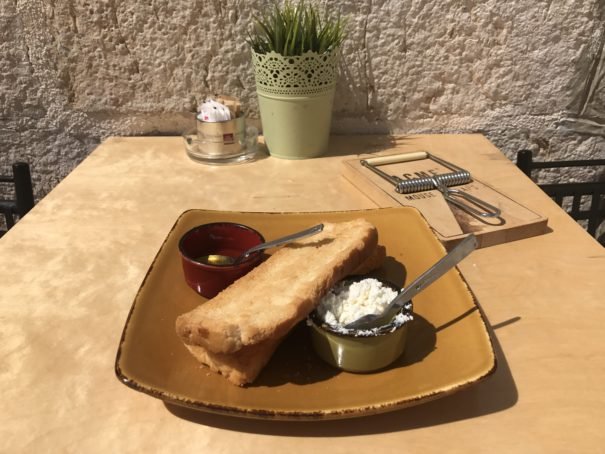
There’s Homemade, and Then There’s Made by Benedictine Nuns for 300 Years

There’s Homemade, and Then There’s Made by Benedictine Nuns for 300 Years
Baškotini and skuta in Croatia
We entered the monastery, and Martina Pernar Škunca rang a bell. A window opened and a nun said, “Hvaljen Isus i Marija”—Blessed by Jesus and Mary. Martina asked for a kilo (just over two pounds) of baškotini. The sister thrust a bag brimming with the hard, sweet bread into her hands and Martina gave her 70 kunas, about $10 USD. The shutter closed with such alacrity that I couldn’t recall the sister’s face, having only caught a glimpse of her black-and-white habit and the wireframe glasses set low on her nose. A warm bakery scent lingered.
In Pag Town, on the Croatian island of Pag, a rugged strip of land in the Adriatic Sea, nuns at the Benedictine Monastery of Saint Margaret have made baškotini for 300 years. Centuries ago, many citizens didn’t have open-fire baking ovens, so they would go once a week to the monastery and buy baškotini to last the whole week. The sisters kept their rusk bread recipe a secret—no small feat in a small town. Traditionally presented to guests with bijela kava (white coffee, a sort of latte), family celebrations on the island are not complete without this aromatic, toast-like bread, which has a hint of anise. “I used to eat it with milk when I was child, but it’s more common with white coffee, especially among adults,” Martina told me. “When a child is born, baškotini with white coffee is served, and then we dip it. It softens and it is more tasty.”
Martina works at Paška Sirana, the island’s oldest creamery, which supplies the other half of the baškotini breakfast equation. Residents also eat baškotini with honey and skuta, a sheep’s milk ricotta that is only available during the milking season, from January through June. Sweet or salty with notes of warm nuts, each cheesemaker has their own secret for crafting skuta. After producing Paški sir, the island’s famous cheese made from milk, flavored with the salt-dusted herbs on which the sheep graze, skuta is cooked from the remaining whey.
There isn’t just a strong emotional connection between the island of Pag and skuta. It’s also healthy. Skuta helps to regulate blood sugar, and contains proteins that strengthen the immune system—key for early-rising shepherds who face the bura, a severe winter wind that reaches near-hurricane strength. Skuta was traditionally a reward for shepherds; the day began with a ritual of black coffee into which pieces of skuta were mixed.
This spring, four years after my encounter with the bespectacled sister in the window, I rediscovered baškotini and skuta at Wine & Cheese Bar Trapula, on the main square in Pag Town, across from the Church of the Assumption of Mary. Trapula was a fitting place to reconnect with two of the island’s treasured culinary staples, listed on the menu as the traditional Pag breakfast. The combination was a perfect start to my last day on Pag.